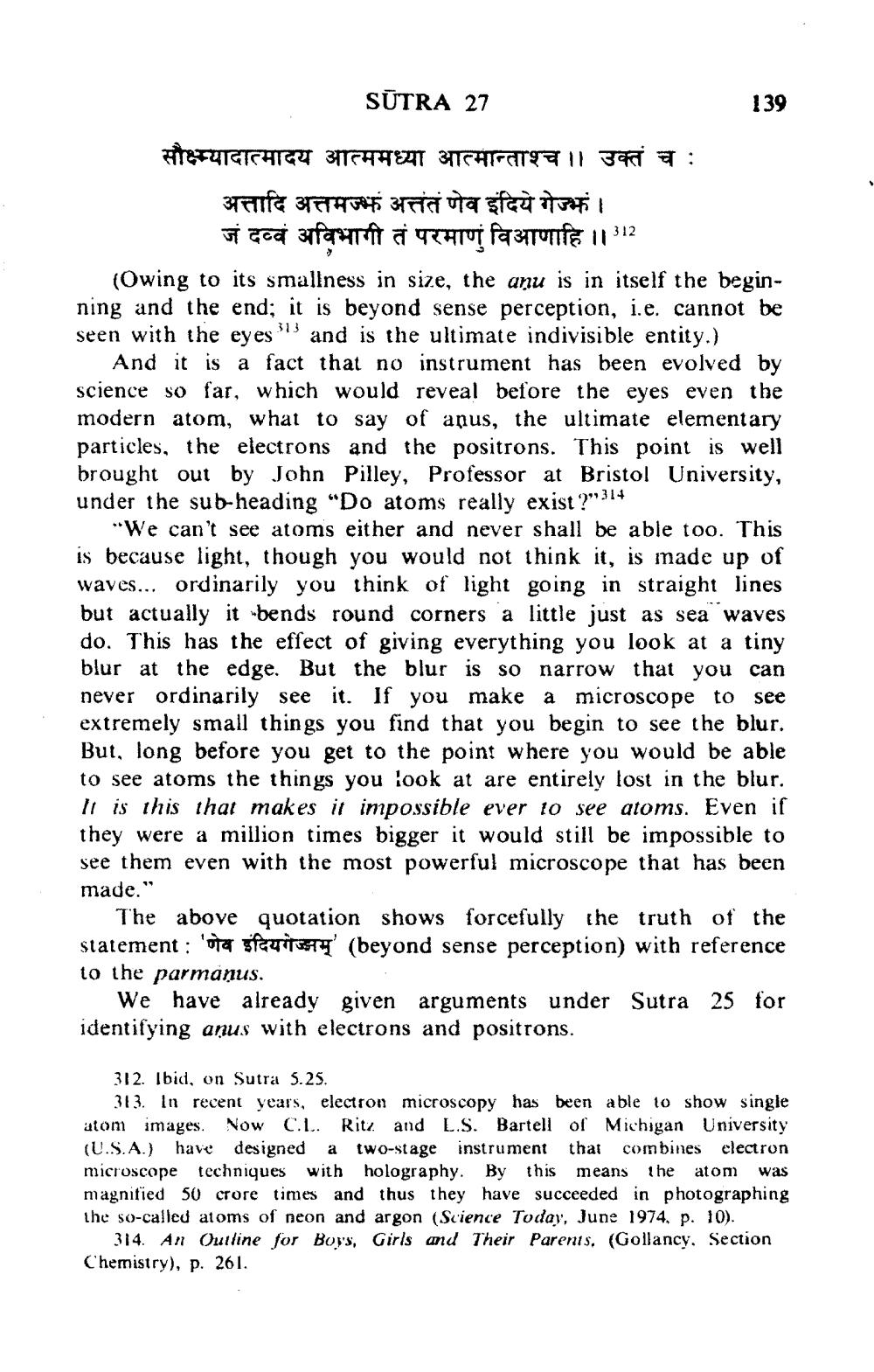________________
SUTRA 27
सौक्ष्म्यादात्मादय आत्ममध्या आत्मान्ताश्च । उक्तं च :
अत्तादि अत्तमज्भ अत्तंतं णेव इंदिये गेज्भं । जं दव्वं अविभागी तं परमाणुं विआणाहि ।।
312
139
(Owing to its smallness in size, the anu is in itself the beginning and the end; it is beyond sense perception, i.e. cannot be seen with the eyes and is the ultimate indivisible entity.)
313
And it is a fact that no instrument has been evolved by science so far, which would reveal before the eyes even the modern atom, what to say of anus, the ultimate elementary particles, the electrons and the positrons. This point is well brought out by John Pilley, Professor at Bristol University, under the sub-heading "Do atoms really exist?"314
"We can't see atoms either and never shall be able too. This is because light, though you would not think it, is made up of waves... ordinarily you think of light going in straight lines but actually it bends round corners a little just as sea waves do. This has the effect of giving everything you look at a tiny blur at the edge. But the blur is so narrow that you can never ordinarily see it. If you make a microscope to see extremely small things you find that you begin to see the blur. But, long before you get to the point where you would be able to see atoms the things you look at are entirely lost in the blur. It is this that makes it impossible ever to see atoms. Even if they were a million times bigger it would still be impossible to see them even with the most powerful microscope that has been made."
The above quotation shows forcefully the truth of the statement: (beyond sense perception) with reference
to the parmaņus.
We have already given arguments under Sutra 25 for identifying anus with electrons and positrons.
312. Ibid, on Sutra 5.25.
313. In recent years, electron microscopy has been able to show single atom images. Now C.L. Ritz and L.S. Bartell of Michigan University (U.S.A.) have designed a two-stage instrument that combines electron microscope techniques with holography. By this means the atom was magnified 50 crore times and thus they have succeeded in photographing the so-called atoms of neon and argon (Science Today, June 1974, p. 10).
314. An Outline for Boys, Girls and Their Parents. (Gollancy. Section
Chemistry), p. 261.




